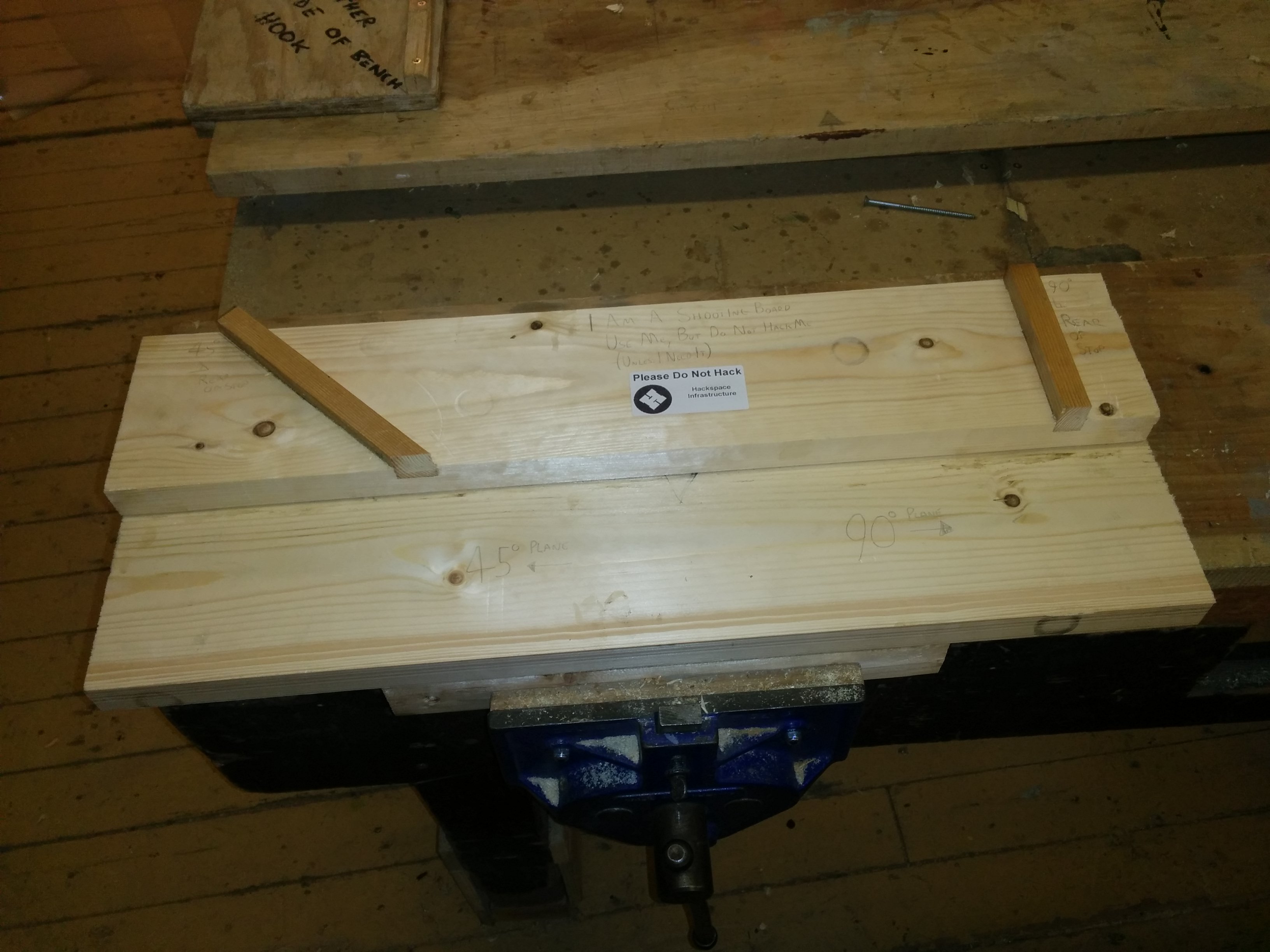Shooting Board
The shooting board allows you to plane the end grain of wood to a perfect Right Angle or 45° Mitre.
It is very similar in principle to the bench hook, both being no more than a simple work-holding device to allow you best use an actual tool.

Using the Shooting Board
- Clamp the board in a vice, using the lip underneath.
- The board needs to sit supported on the bench top.
- Ideally use one of the two big Record 52½ vices on the woodworking bench, one of the two vices on the middle bench is also suitable.
- Select an appropriate plane, and set it to take a fine shaving.
- To cut endgrain cleanly, the Iron will need to be as sharp as possible.
- Touch it up on both sides of the Norton Pike sharpening stone.
- In the lighter wooden box with mouldings.
- Then on the natural Charnley Wood stone.
- In the dark wooden box with the "sharpening stone" label.
- If you feel comfortable doing so it may help to polish the edge using a buffing wheel on the pedestal grinder.
- Initially use black or brown compound, and finish with red compound.
- Use one of the firm black buffing wheels for best results.
- Touch it up on both sides of the Norton Pike sharpening stone.
- The side of the plane needs to be square to the sole, and the Iron ground and set square. The wooden try plane and №4½ or №5 metal planes are best suited to the job.
- To cut endgrain cleanly, the Iron will need to be as sharp as possible.
- Place the Plane on its side on the lower half of the board, and take a couple of strokes along the edge of the raised edge.
- this ensures that the Iron will be cutting only the workpiece, minimising the effort required.
- Hold your workpiece firmly against the appropriate fence.
- The end of the workpiece to be trimmed should overhang past the fence by the amount that the Iron is set proud of the plane's sole, in practice this will only ever be a tiny amount barely perceptible to the eye.
- Ensure there are no shavings or dust between the workpiece and the board for maximum accuracy.
- Take a stroke with the plane.
- Start the stroke with the sole at the toe (front) of the plane just sitting on the workpiece, this ensures that the plane with cut rather than colide with your work.
- Repeat until marked length is achieved.